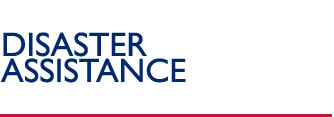How Can I Help?
Handling Appropriate Commodity Contributions
If all of the conditions
for appropriate commodity contributions are met, a commodity
contribution plan and inspection mechanism should be in place
before any commodities are collected.
The commodity contribution plan must encompass all logistical
and financial aspects of the contribution, from point of collection
to ultimate distribution to the intended beneficiaries. The
plan must involve the donor, the receiving organization, and
the distributing organization (if different) and should address
the following issues:
- The confirmed need of the beneficiaries for the commodities
being offered: Specific characteristics, quality, and quantity
should be clear and verified.
- The packaging and labeling requirements: Commodity contributions
need to be packaged and labeled in specific ways in order
for shipping, customs, storage, and distribution to proceed
smoothly.
- The shipping arrangements, including funding: International
shipping is very expensive and extremely complicated. A
source of funding for the shipment must be identified before
collections begin. A freight forwarder and consignee for
the shipment must also be identified in advance.
- The humanitarian organization's local storage and distribution
plan: The organization should have resources in the affected
region ready to receive, offload, store, and eventually
distribute the commodities to the beneficiaries.
All commodities must be inspected prior to shipment in order
to ensure that the above conditions have been met. In addition,
the inspection should ensure that the commodities are in working
order and are safe from tampering, defects, or other conditions
that could cause danger to the intended beneficiaries. The
receiving organization should be able to provide additional
information on inspections mechanisms.
Offers that meet the criteria
for appropriate commodity contributions can be registered
with the Center
for International Disaster Information for possible linkage
with humanitarian organizations. In addition, InterAction
maintains a list of its member organizations that sometimes
accept commodity contributions.
Please note that USAID cannot be responsible for
transport, storage, customs clearance, distribution, inspection,
monitoring, or any other aspect of commodity contributions.
Back to Top ^
|


